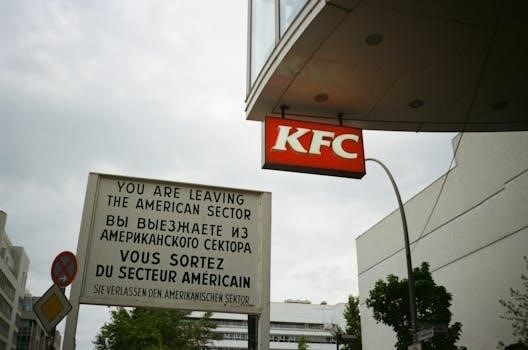Charlie and the Chocolate Factory PDF⁚ An Overview

This famous tale by Roald Dahl, Charlie and the Chocolate Factory, is widely available in PDF format. The story follows young Charlie’s life as it changes when he finds a golden ticket. This ticket grants him a tour of Willy Wonka’s wondrous chocolate factory, leading to his adventure with other lucky children.
Free PDF Availability of “Charlie and the Chocolate Factory”
Accessing a free PDF version of “Charlie and the Chocolate Factory” is surprisingly easy, thanks to numerous online platforms and digital libraries. Many websites offer the complete text, allowing readers of all ages to enjoy Roald Dahl’s classic tale without any cost. These free PDF versions can be found on sites dedicated to ebooks, online archives, and educational resources. Some libraries also provide digital copies through their online platforms. This widespread availability ensures that the story remains accessible to anyone with an internet connection and a device capable of reading PDFs. It is important to ensure that the downloaded PDF is from a legitimate source to avoid malware or altered versions of the book. The free accessibility of “Charlie and the Chocolate Factory” in PDF format promotes literacy and encourages reading among younger generations. The ability to download and access this story for free has made it a very popular format for reading, whether for personal enjoyment or school assignments. This makes it easy to share the book with friends and family without any purchase.

The Plot⁚ A Golden Ticket to a Whimsical Factory
The plot of “Charlie and the Chocolate Factory” centers around a global contest where five golden tickets are hidden inside Wonka chocolate bars. These tickets serve as a gateway to Willy Wonka’s mysterious and fantastical chocolate factory, a place of wonder and imagination. The story begins by introducing Charlie Bucket, a poor but kind boy who lives with his family near the enormous Wonka factory. The excitement builds as news of the golden ticket contest spreads, and children around the world eagerly search for the elusive tickets. The lucky finders, including Charlie, are granted a tour of the factory, where they encounter surreal rooms filled with chocolate rivers, edible gardens, and innovative candy machines. However, the tour is not without its challenges, as the other children’s misbehavior leads to bizarre and often humorous consequences. The plot is a perfect blend of fantasy, adventure, and moral lessons, making it a captivating read for both children and adults. The journey through the factory becomes a symbolic representation of the characters’ true nature.

Charlie’s Dream and the Enormous Chocolate Factory
For young Charlie Bucket, the enormous chocolate factory is not just a building; it’s the stuff of dreams. He lives in the shadow of this colossal, mysterious place, a constant reminder of the delights and wonders that lie just beyond reach. The factory, owned by the enigmatic Willy Wonka, is a source of endless fascination for Charlie, as it represents a world far removed from his own impoverished life. He spends hours gazing at its windows, imagining the delicious secrets it holds. In his mind, the factory is a magical realm filled with chocolate rivers, candy trees, and every imaginable sweet treat. This dream fuels his hope and determination to find a golden ticket and experience the marvels within. The stark contrast between Charlie’s humble reality and the opulence of the factory heightens the anticipation and makes his ultimate visit all the more significant. The factory is more than a place it’s a symbol of hope and possibility for Charlie and the reader.
The Golden Ticket Contest and its Impact
The announcement of Willy Wonka’s golden ticket contest sent waves of excitement and frenzy across the globe. The idea that five ordinary chocolate bars held the key to a tour of the fabled factory captivated the world. For Charlie, the contest was a glimmer of hope in his otherwise bleak existence. He desperately hoped to find a golden ticket, and it was this hope that drove the narrative. The contest’s impact was not limited to Charlie; it affected the lives of all five children who found the tickets, thrusting them into the spotlight. The contest was a genius marketing strategy by Wonka, as well as a social experiment, revealing the character flaws of some, and highlighting the pureness of Charlie’s heart. It became a catalyst for a whimsical journey, and a means to discover who might be worthy of a special prize. The contest significantly changes the lives of the participants and the story itself, setting the stage for the factory tour.
The Five Lucky Children and their Personalities
The five lucky children who discover the golden tickets are a diverse bunch, each with distinct personalities that play a crucial role in the story. Augustus Gloop, an enormously fat boy, is obsessed with eating, particularly chocolate. His gluttony is evident in his actions and sets him apart from the others. Veruca Salt, a spoiled brat, demands constant attention and material possessions. Her parents enable her behavior, making her one of the most disliked characters. Violet Beauregarde, a gum-chewing champion, is competitive and arrogant. She is obsessed with chewing gum and strives to be the best at everything she does. Mike Teavee, an avid television watcher, is glued to the screen and dismissive of anything else. He represents the negative impact of excessive media consumption. Charlie Bucket, the only truly good child, stands out due to his kindness, politeness, and pure heart, contrasting the other children’s flaws. These contrasting personalities create the conflicts and humor of the story.
The Factory Tour⁚ Wonders and Misbehavior
The tour of Willy Wonka’s chocolate factory is a journey into a world of fantastical inventions and delectable treats. The children are immediately amazed by the chocolate river, edible flowers, and other wonders. However, as the tour progresses, their individual flaws lead to misbehavior and consequences. Augustus Gloop’s greed results in him falling into the chocolate river, while Veruca Salt’s demanding nature leads her to be thrown down the garbage chute. Violet Beauregarde’s competitive spirit causes her to turn into a giant blueberry, and Mike Teavee’s obsession with television results in him being shrunk to a miniature size. Charlie, on the other hand, remains well-behaved, and his kindness and respect are noticed by Mr. Wonka. The factory tour showcases how the children’s actions lead to their downfall, emphasizing the importance of good behavior, and contrasting the wonders of the factory with the consequences of their misdeeds.
Publication History of “Charlie and the Chocolate Factory”
Charlie and the Chocolate Factory was first published in the United States in 1964 by Alfred A. Knopf, Inc., marking the initial introduction of this whimsical tale to the world. Shortly after, the book was released in the United Kingdom, approximately eleven months later, by George Allen & Unwin, expanding its reach across the globe. The book’s journey continued as it secured a place in the hearts of readers, which has led to its continuing popularity, with various editions published over the years. It is also noted that the book has been included in several surveys over the years including one in 2012 by SLJ, a monthly publication, which placed it second among the top 100 Chapter Books, marking it as one of the most notable and beloved children’s books of all time. This publication history has played a key role in the book’s success and its continued appeal to different generations.
Thematic Elements⁚ Greed, Spoiling, and Goodness
Charlie and the Chocolate Factory explores several potent thematic elements, most notably greed, the consequences of spoiling children, and the virtue of goodness. The story presents characters like Augustus Gloop, whose insatiable greed for food leads to his downfall, and Veruca Salt, a spoiled brat whose demanding nature results in her unpleasant exit from the factory tour. These characters serve as cautionary tales, illustrating the negative impacts of excessive desire and unchecked behavior. In contrast, Charlie Bucket embodies goodness, demonstrating kindness, humility, and gratitude. His positive traits are rewarded, highlighting the importance of moral values. Through these contrasting portrayals, the book encourages readers to reflect on the choices they make and the values they embrace. The narrative effectively uses these thematic elements to convey a powerful message about the importance of character and the rewards of living virtuously, contrasting negative behaviors with positive ones.
Online Resources for Reading the Book

The Ebook Format and Accessibility
The ebook format of Charlie and the Chocolate Factory, often available as a PDF, significantly enhances its accessibility. This digital format allows readers to enjoy the story on a multitude of devices, including computers, tablets, and smartphones, making it incredibly convenient. PDF ebooks maintain the original layout and formatting of the printed book, ensuring a consistent reading experience. Furthermore, ebooks are often searchable, allowing readers to quickly find specific passages or information. Accessibility features are often included in PDF readers, like font resizing and text-to-speech capabilities, which aid readers with visual impairments or learning differences. Many online platforms and libraries offer the ebook version for free or at a low cost, making the story more easily obtained than traditional physical copies. The ease of sharing and storing digital files also adds to the accessibility, making it a popular choice for both individual and educational use. The digital format truly opens up the joy of reading to a wider audience.
Study Guides and Comprehension Aids
Numerous study guides and comprehension aids are available for Charlie and the Chocolate Factory, enhancing the reading experience, especially for educational purposes. These resources, often found in PDF format, offer a range of activities, questions, and analyses designed to deepen understanding of the story’s themes, characters, and plot. Comprehension questions encourage readers to reflect on the text, fostering critical thinking skills. Writing projects prompt creative engagement with the narrative, while character analyses allow for a deeper exploration of each individual’s motivations and impacts. Some guides also include vocabulary lists to expand students’ language skills. Moreover, many study guides integrate interactive elements, like quizzes and discussion prompts, that are beneficial for both individual and group learning. Recipes for Wonka-inspired treats are also sometimes included, adding a fun, creative dimension to the learning experience. These aids are designed to not only improve comprehension but also to make the book more engaging and enjoyable for readers of all ages.

